Every kitesurfing who has had kitesurfing lessons should know them. The 8 kitesurfing rules drawn up by the International Kiteboarding Organization (IKO). View our extensive kitesurf blog about kitesurf theory in which we explain the rules as easily as possible.
Kitesurfing is always different, sometimes less predictable
Kitesurfing involves speed and distance travel. In addition, the wind, weather and water play an important role. A kitesurfing session in the Netherlands is never the same. Not even on inland waterways. That is what makes kite surfing so cool.
The downside is that kite surfing can sometimes be less predictable. A gust of wind that makes your jump higher and further. A wave that you are going over that is steeper than expected and you are suddenly in the air. Sparkling water so you walk less height than expected. These are just a few of the situations that occur. We are not even talking about other kite surfers and their behavior. Some are completely absorbed in their own session without looking around. Other kite surfers who casually kite or turn everywhere in between without looking over their shoulder to see if this is safe.
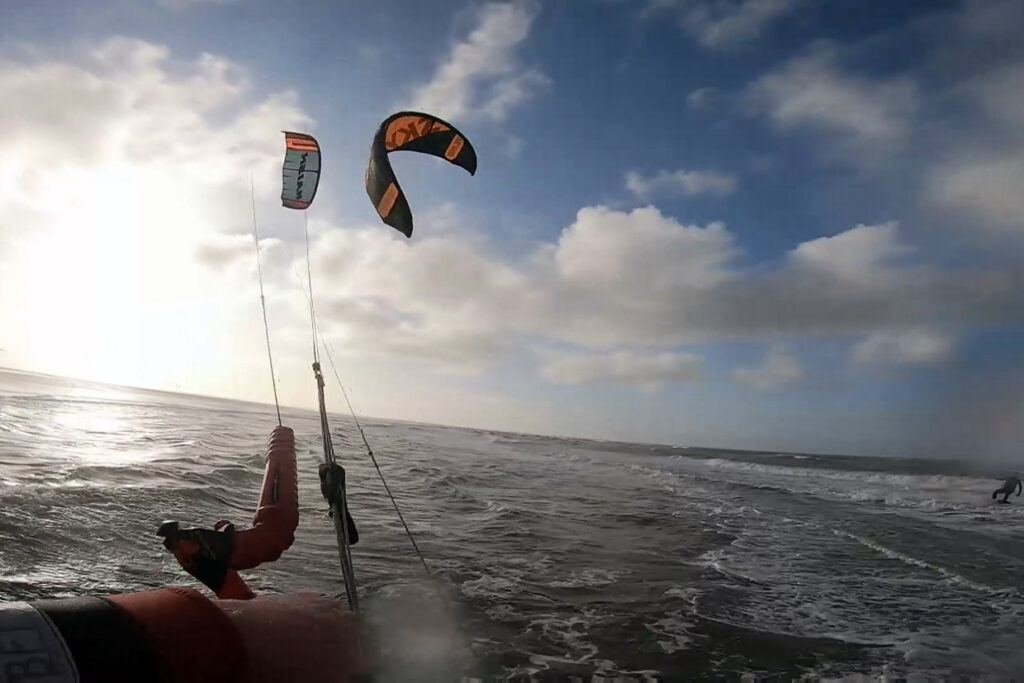
A kitesurf crash is easily done
Risk happens fast. That's a fact and I think we've all been there. Suddenly, out of nowhere, a kite crashes right next to you. Whew ... Or you think that everything is going well and suddenly you have to do everything you can to avoid another kite surfer or to prevent a kite crash ...
Suddenly, out of nowhere, a kite crashes right next to you. Oof…
Almost kitesurf crash from kitesurf rules perspective
In the video below you can see that things are going just fine. We asked the question for learning Instagram who is wrong. With a score of 70% against 30%, we conclude that it is not always easy to determine this. And if it is already difficult from your couch, what is it like if you do not have a second to think on the water? So difficult.
Golden rule applies
My conclusion is that I have my kite low and I am sailing downwind. The golden rule of the IKO then applies: “downwind kite low, upwind kite high”. Thus, I have priority. The kiters kitesurfing in my direction must therefore keep the kite high so that the lines can never get tangled.
Self-reflection almost kitesurf crash
However, I arrive hard. I also keep crossing closer to the other kite surfers. I still make a hand gesture to the first rider that I am going downwind. Maybe the kite surfer in the back thought I wanted to pass behind him. Maybe he just couldn't walk enough height on that stretch of sea or he just turned. In the end I had to do everything to avoid the other. You can see that clearly from my steering correction and you can also hear that from my shock response. In retrospect, I wonder why I had to kite surf so close to the bottom. The sea was otherwise empty and I could easily have turned around and / or kept my distance.
Kitesurfing rules are not everything
If, even if you have right of way, you are able to avoid a collision without any problems, you should always do so.
The guilt question is interesting, and swearing on water can also happen. The most important thing, however, is to prevent an accident. Whether or not you have priority on the water with the kitesurfing rules in mind. Ultimately, it's about avoiding a crash. Safe out, safe at home, remember.


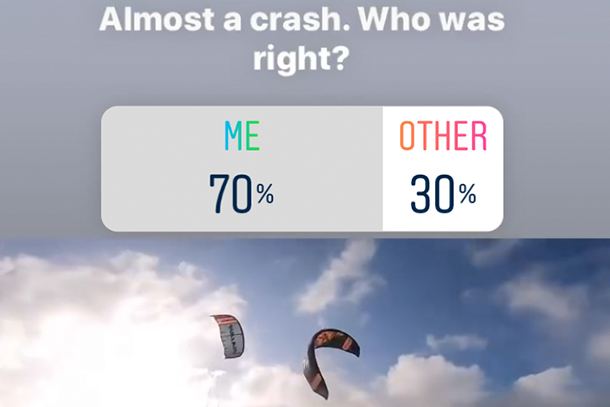
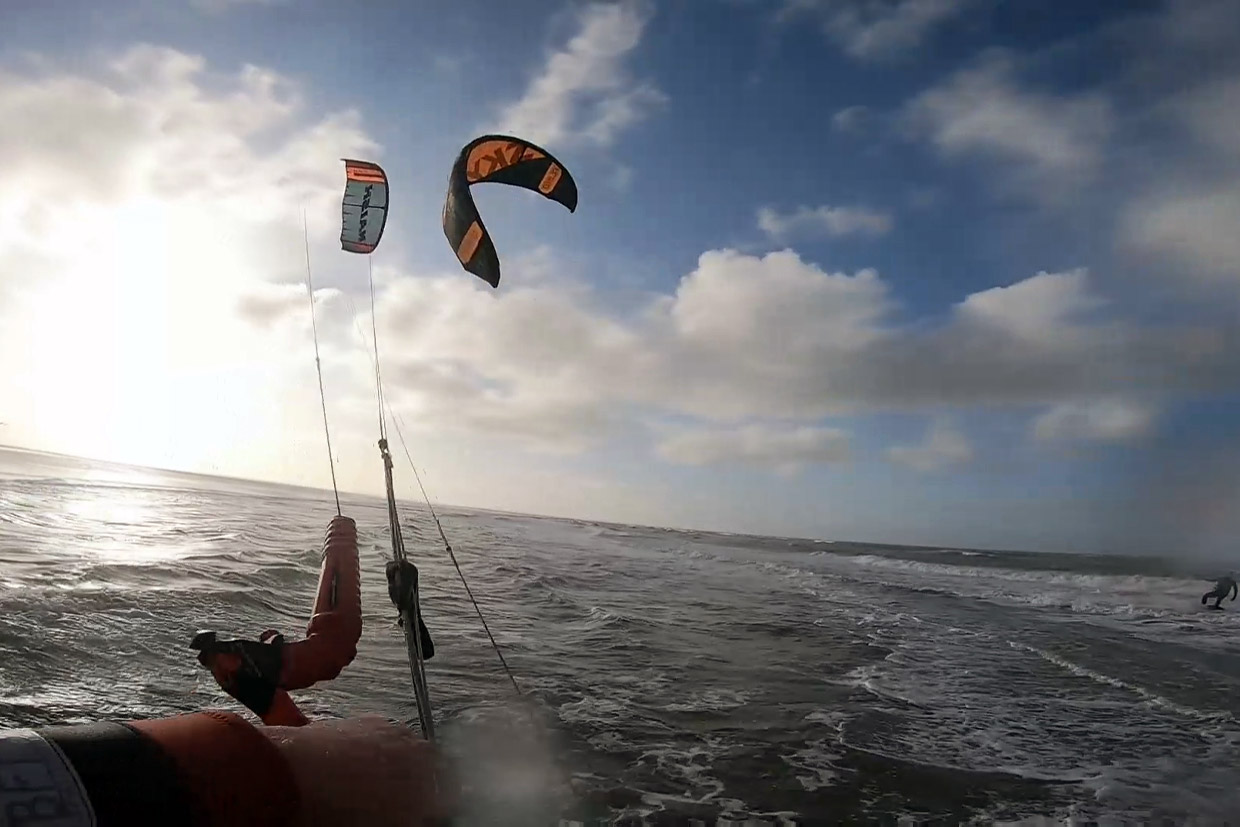
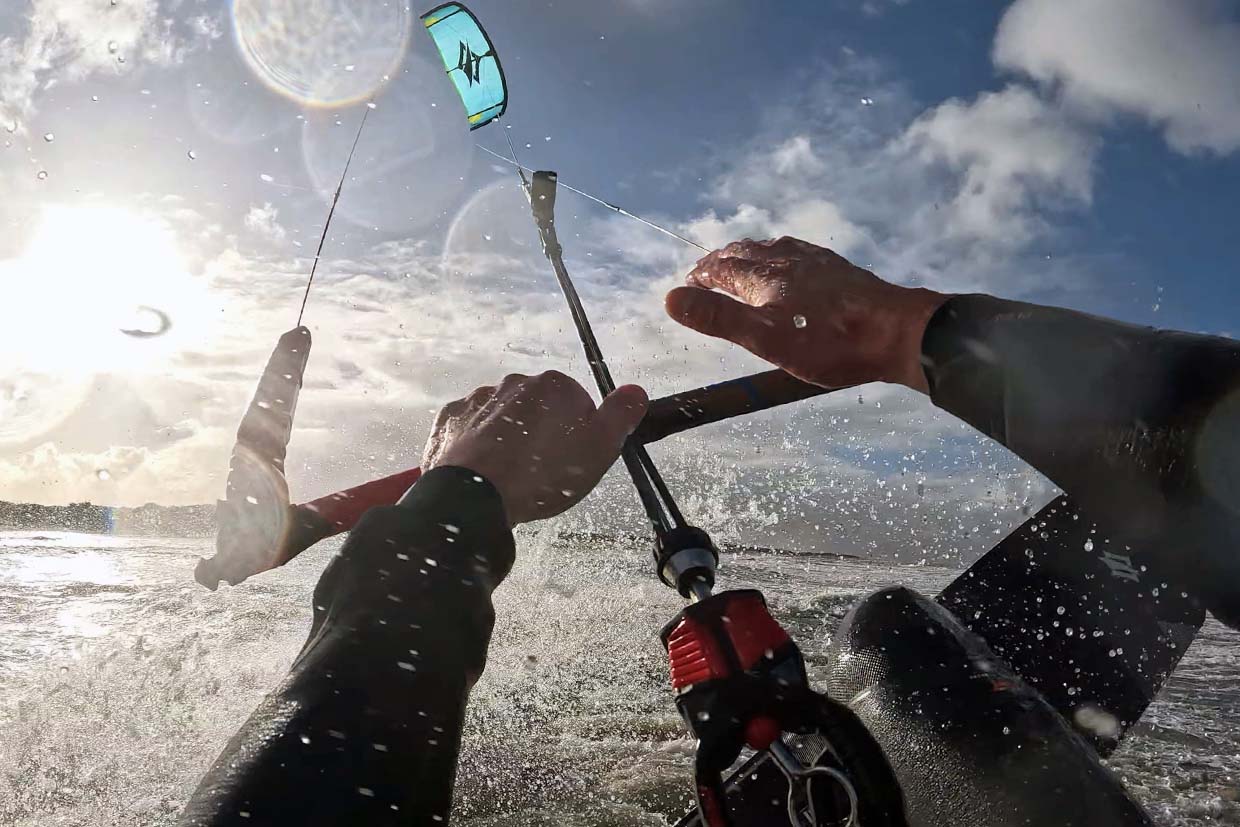
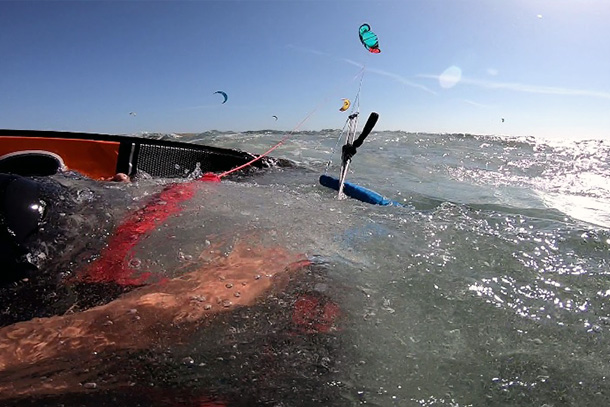

you come from upwind, you have a lot of speed, you are passing on the unnatural side (since you are riding starboard, if you would be riding upwind you would have priority and would pass them upwind with your kite high). The gold rule is not a priority rule it basically just means at the moment of crossing if you are upwind you put the kite up, and downwind you put the kite down. This does not mean if you are riding in the downwind direction that this golden rule applies. You had no right to pass so close infront of those riders because you are riding in the downwind direction (and fast), and they are riding upwind, and you are upwind relative to them. They probably don't see you untill you are nearby because you are coming from upwind.